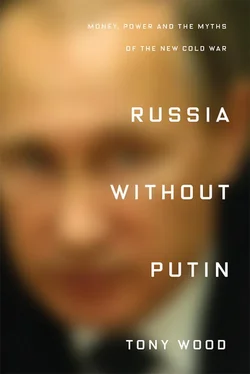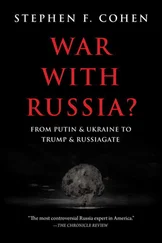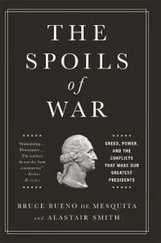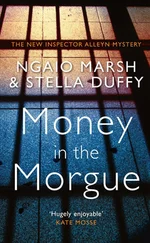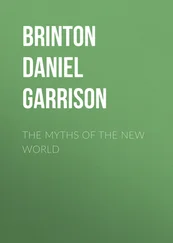The history of post-Soviet capitalism should be understood not as a lurch away from free markets toward statism, but as a series of struggles for power and profit within a single elite that spanned the worlds of government and private business. The symbiotic entwinement of the two domains accounts for many of the Putin system’s most distinctive characteristics: the strength of its grip on power and profits, but also the corruption and illegality that have done so much to undermine its domestic and international legitimacy. Often ascribed to the rapaciousness and ruthless ambition of individuals, these phenomena are also enabled by the particular form capitalism has taken in Russia.
The symbiosis of state and business that defines Russian capitalism today has its origins in the late Soviet period, when the relationship between political and economic power began to change. For most of the USSR’s history, it was not material wealth that defined the ruling elite, but an individual’s position within the party–state apparatus. The nomenklatura , the core of the administrative elite, enjoyed privileges denied to the mass of the population: spacious apartments, holiday homes, even chauffeurs and servants, as well as access to special shops stocking scarce goods. Party membership, too, conferred advantages, especially in terms of career advancement or favours that could be called in through informal channels. Economic status was firmly subordinated to political power. But in the final Soviet years, the ground started to shift.
The first seeds of a new economic elite were planted in the late 1980s, as Gorbachev’s reforms started to open up possibilities for private enrichment. For a few entrepreneurs, arbitrage was one way to make lucrative gains in these years. The state monopoly on foreign trade was abolished in 1986, but internal price controls were not, so for a time, huge profits could be made by exploiting the difference between domestic and export prices. Boris Berezovsky, then a mathematician at the Institute of Control Sciences, did especially well out of such trade, buying computers and cars at subsidized rates and then reselling them. Others of the future oligarchs of the 1990s – Aleksandr Smolensky, Vladimir Gusinsky – began to pull in tidy sums from currency speculation, betting on fluctuations in the rouble exchange rate.
Another kind of financial alchemy provided the basis for Mikhail Khodorkovsky’s fortune. As deputy head of the Communist Youth League (Komsomol) at his university, he was well placed to take advantage of the tax breaks and subsidies the organization was granted by the government – along with an almost magical monetary power. The Soviet economy used two forms of money, ‘cash’ and ‘non-cash’ roubles; the former were mainly used to pay wages, while the latter were a planning and accounting device, used to allocate resources across the entire economy – hence there were generally far more of them. ‘Cash’ and ‘non-cash’ accounts were kept strictly separate – until the end of 1987, when the Komsomol was granted permission to convert non-cash budgetary allocations into actual currency. According to Olga Kryshtanovskaia, the leading Russian expert on the Soviet and post-Soviet elites, Khodorkovsky realized he had found a way of ‘making money out of thin air’, and quickly set up his own bank. {6} 6 Olga Kryshtanovskaia, Anatomiia Rossiiskoi elity , Moscow 2004, p. 302; Hoffman, The Oligarchs , p. 113.
At first, Russia’s most successful entrepreneurs were those who exploited the cracks that were appearing in the planned economy. But soon enough, state enterprise managers and apparatchiks were joining the fray. In May 1988, the Supreme Soviet passed the law ‘On Cooperation’, which allowed groups of individuals to establish self-financed, self-managing cooperatives. The cooperative sector rapidly mushroomed: by 1989 there were 193,000 of them, employing a workforce of 5 million and accounting for more than 4 per cent of GDP. {7} 7 Figures from Barnes, Owning Russia , p. 56, Table 3.1.
Billed as the spearhead of a new, competitive market economy, cooperatives were in practice mostly attached, barnacle-like, to the old system. The vast majority were closely connected with state-owned enterprises. Often they were simply a way to siphon money into a few select hands: the ‘members’ who received dividends tended to be the managers of an enterprise rather than its workforce. Cooperatives were also allowed to set up their own financial arms, producing a plethora of ‘pocket banks’ that could borrow from the central bank at low rates – and of course issue ‘loans’ to members.
In 1989, managerial personnel and figures from the state apparatus began directly appropriating pieces of the planned economy. This was the beginning of what is called latent privatization. {8} 8 Clear accounts of this process are offered by Kryshtanovskaia, Anatomiia Rossiiskoi elity , pp. 307–18, and Steven Solnick, Stealing the State: Control and Collapse in Soviet Institutions , Cambridge, MA 1998, ch. 7.
Local bosses turned factories into joint-stock companies in which they awarded themselves majority stakes. Meanwhile, regional officials used Party funds to set up banks and firms where they would then take up cosy executive positions.
The party–state apparatus was also rushing into business: the Communist Party set up commercial banks and hard-currency hotels, while the KGB developed similar business interests of its own. At the same time, entire blocs of the Soviet economy were being taken out of ministerial control and placed under that of new commercial entities. In 1989, the natural gas ministry became the company Gazprom, and the same year the ministry of metallurgy spawned the firm Norilsk Nickel, while the state bodies responsible for water, construction, chemicals and petroleum refining had morphed into dozens upon dozens of new firms. Most of these were still ‘state-owned’, but did not remain so for long.
At this stage, then, there were two main pools of recruits for the emergent economic elite: entrepreneurs, who capitalized on the Soviet state’s disintegration, and Party apparatchiks and industrial managers, who increasingly seized assets under their purview. Common to both groups was the essentially parasitic nature of their fortunes. Much would change during the upheavals of the 1990s, but the foundational dependence of economic wealth on political power would not be undone.
The disappearance of the USSR in 1991 was followed by one of the most dramatic transfers of property in history. Brash new private fortunes were made, giving rise to a layer of oligarchs who came to dominate the headlines. The likes of Berezovsky, Smolensky, Gusinsky and Khodorkovsky looked to be the new power in the land. For many Russians, the sudden arrival of these nouveaux riches demonstrated the ascendancy of private wealth over state authority. Yet their wealth was essentially created by the largesse of the country’s political rulers.
Nothing demonstrates this more clearly than the process of privatization – widely referred to at the time as prikhvatizatsiia , ‘grab-it-ization’. The Yeltsin government’s massive sell-off of state assets was explicitly designed to smash the Soviet command economy and create a market system dominated by a new class of wealth-holders. Anatoly Chubais, head of the State Property Committee, told one interviewer that ‘every enterprise ripped out of the state and transferred to the hands of a private owner was a way of destroying Communism in Russia… At that stage, it didn’t matter at all to whom these enterprises went, who was getting the property.’ The huge imbalances of wealth, power and opportunity this created were just something the populace would have to accept: in November 1992, Chubais shrugged that ‘if the problem is only that the rich will buy up the property, I am sure that is the way it must be.’ {9} 9 Quoted in Hoffman, The Oligarchs , pp. 185, 192–93, 203.
Читать дальше
